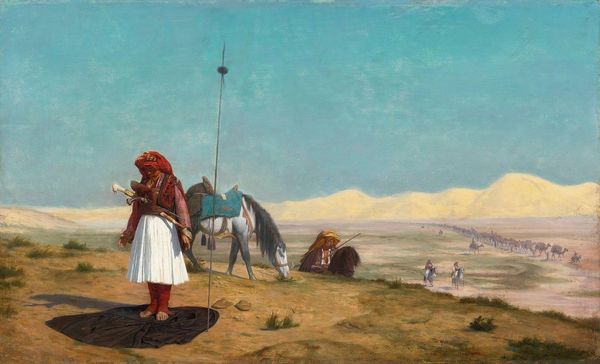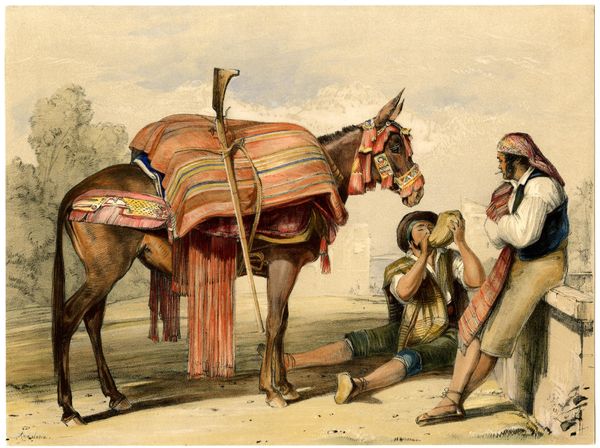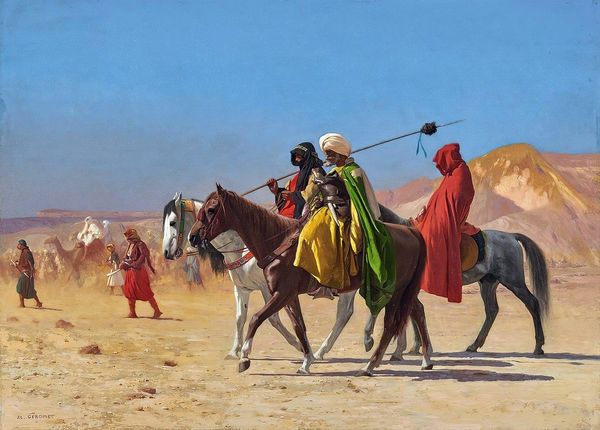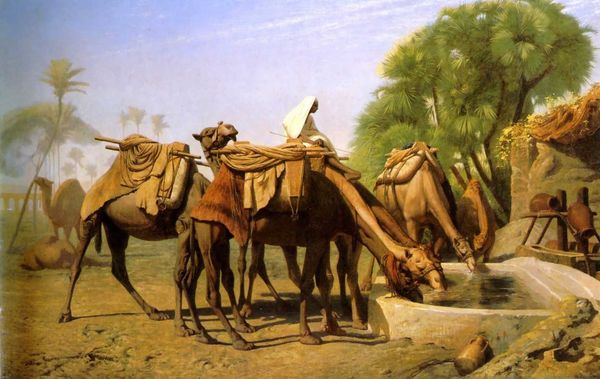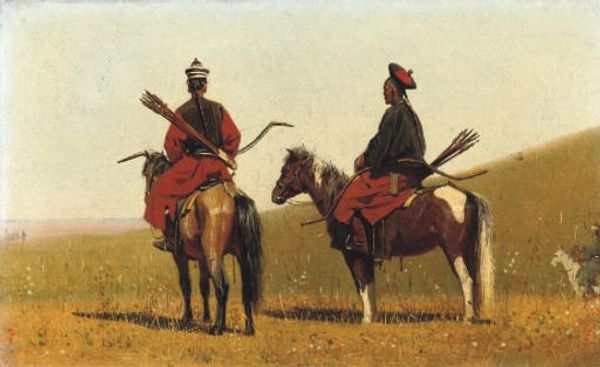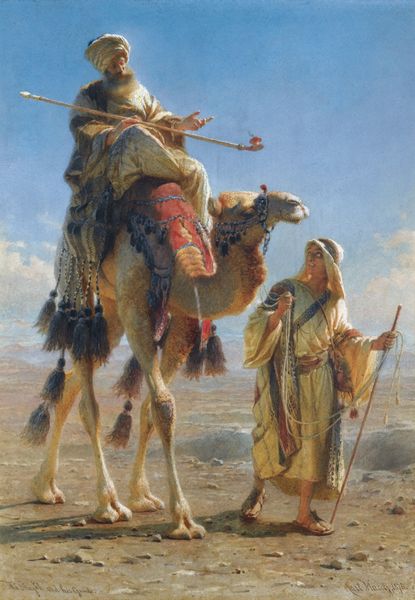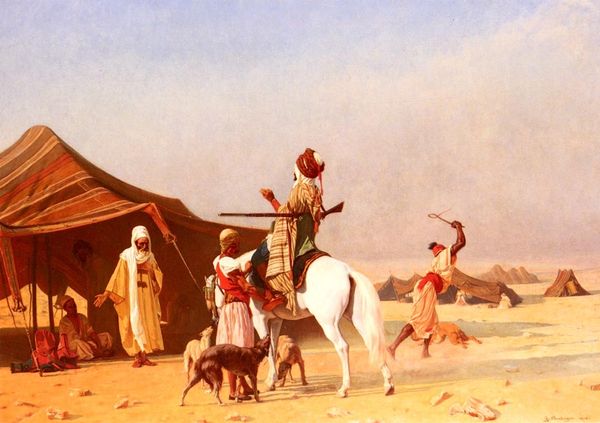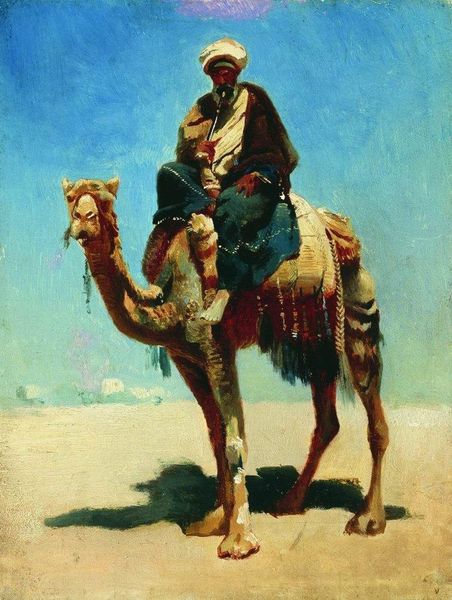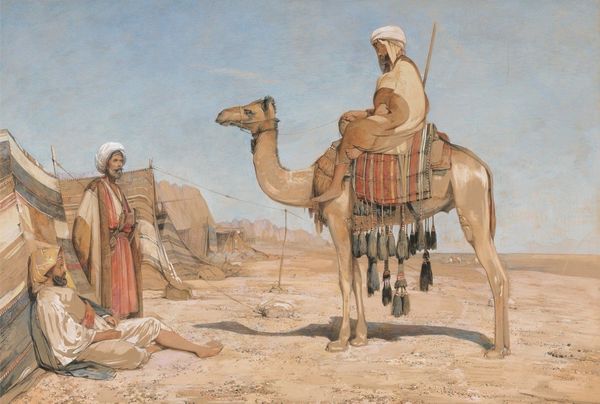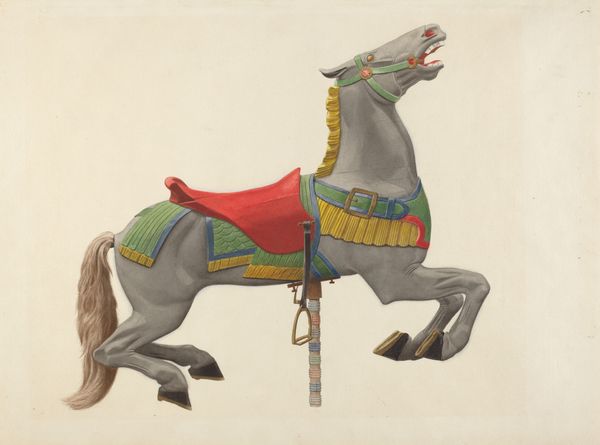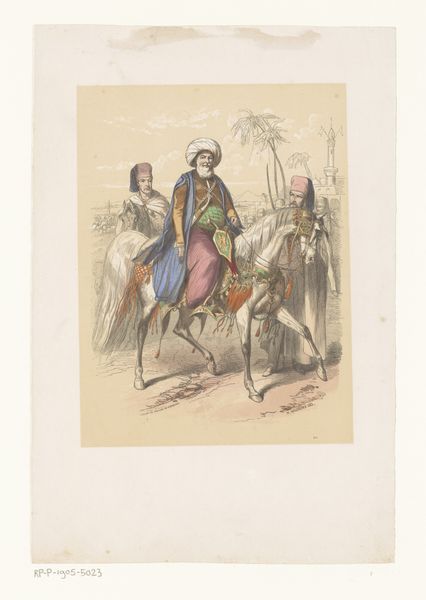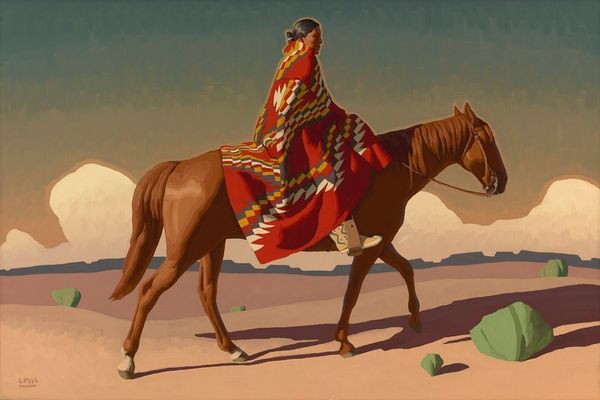
tempera, painting
#
tempera
#
painting
#
landscape
#
orientalism
Copyright: Public domain
Editor: This is a tempera painting, "Painting of the logo of the restaurant Zum Schwarzen Kameel," attributed to Ferdinand Georg Waldmüller. The regal camel with its ornamental garb really captures my attention. What can you tell me about this depiction? Curator: Well, immediately, this invokes a very specific, and historically loaded, genre: Orientalism. Waldmüller, though celebrated for his landscapes, is here engaging with a visual language that, even if unintentionally, exoticizes the East. Notice the lone camel, adorned, set against what appears to be a generic desert backdrop—a landscape stripped of specific cultural markers. Editor: I see what you mean. So, it's not just a harmless depiction of a camel? Curator: Precisely. We need to consider the power dynamics at play when European artists represent non-European cultures. This image, like many Orientalist works, flattens and romanticizes a vast and diverse region, distilling it into easily consumable stereotypes. What purpose do you think images like this served in its historical context? Editor: Maybe it reinforced a sense of European superiority, this romantic view of far away lands making them seem, well, 'lesser'? Curator: Exactly. And that connects directly to colonialism. Images like this help normalize a specific relationship between the West and the East, one rooted in inequality. And it's interesting that it's a restaurant logo. It makes me think about consumption and taste, doesn't it? Editor: I hadn't considered that... This makes me want to look more closely at the art and narratives surrounding me. Curator: Absolutely! Engaging with art critically means interrogating the assumptions embedded within, prompting reflection of power structures within history, society, and visual culture.
Comments
No comments
Be the first to comment and join the conversation on the ultimate creative platform.
